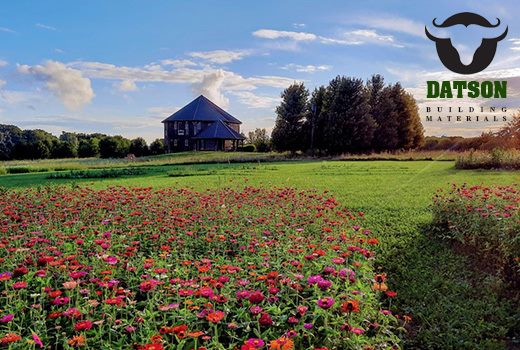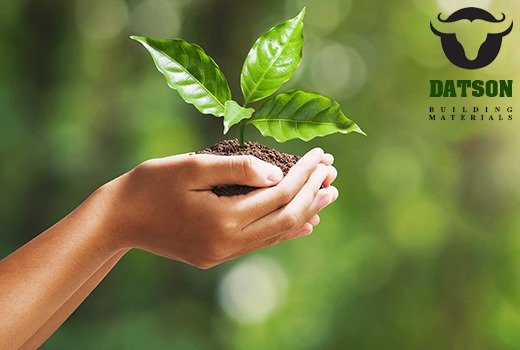In modern agriculture, seed coating technologies play a critical role in enhancing the germination and performance of seeds. Among the many materials used in these coatings, talc seed treatment stands out as a simple yet highly effective option. Derived from natural minerals, talc is a soft, fine powder known for its unique physical properties that aid in the handling, protection, and germination of seeds. Its use has become increasingly popular among farmers and seed companies looking to optimize planting efficiency and crop emergence.
As agriculture becomes more precise and seed quality becomes more crucial, the demand for cost-effective and reliable additives in seed treatment continues to grow. Talc is now widely recognized not just as a lubricant but as a valuable agricultural input that contributes to the overall success of crop establishment.
Let’s explore the advantages, mechanisms, and application techniques that make talc seed treatment an important practice in modern seed management.
Benefits of Talc in Seed Coating Applications
Talc offers several key advantages that make it a valuable additive in modern agricultural practices, particularly in seed treatment technologies
Improved seed flowability and handling
One of the most practical advantages of using talc in seed coatings is its ability to improve the flowability of seeds. During mechanical planting, especially in pneumatic seeders, smooth and consistent seed movement is crucial to prevent blockages and uneven distribution. When seeds are coated with talc, their surface becomes drier and more powdery, allowing them to move freely through planting equipment. This is particularly beneficial in humid climates or when dealing with seeds that have sticky or uneven surfaces.
A talc seed treater is often used to ensure an even and consistent application of talc powder over a batch of seeds, preparing them for seamless planting. Without talc, many planters experience issues like seed clumping or bridging in the hopper, which can lead to missed spots in the field and yield loss. Talc acts as a dry lubricant that reduces friction and promotes a smooth, controlled seed flow.
Reduced moisture retention and clumping
Another critical function of talc in seed coatings is its ability to reduce moisture retention. Seeds treated with chemical protectants or biological inoculants are often wet or sticky right after treatment. This moisture can lead to clumping, uneven coating, and even spoilage if not managed properly. Talc, with its moisture-absorbing characteristics, counteracts this by absorbing excess surface moisture from the seed coating.
By doing so, talc seed treatment ensures that treated seeds remain loose, dry, and free-flowing, reducing the risk of bridging and blockages in planters. In high-humidity regions or during wet seasons, this property becomes even more valuable, ensuring planting operations can proceed without delays.
Enhanced seed-to-soil contact
Good seed-to-soil contact is essential for water absorption, nutrient uptake, and early root development. Talc plays a role here by allowing seeds to settle properly into the soil without sticking together or forming clumps. Its fine particle size helps it adhere uniformly to the seed surface, promoting better separation between individual seeds during planting.
This enhances seed distribution in the field and ensures each seed has direct contact with the surrounding soil particles. Such contact improves moisture uptake and promotes quicker germination. The effects of seed treatment with talc are especially noticeable in precision planting systems, where seed placement and uniformity can directly impact overall crop performance.
How Talc Enhances Seed Germination
One of the key ways talc supports seed germination is by improving the physical environment around the seed.
Better oxygen availability
Oxygen is critical for seed respiration during germination. When seeds are sown into the soil, they require a delicate balance of moisture and oxygen to begin metabolic activities. One challenge in wet or heavy soils is that seeds may become waterlogged, leading to oxygen deficiency and failed germination.
Talc helps to mitigate this risk. Its fine texture prevents water from forming a tight seal around the seed, preserving small air gaps and allowing oxygen to reach the seed embryo. As part of a talc seed treatment, this aeration effect improves the seed’s ability to initiate germination, especially under less-than-ideal soil conditions.
Protection against fungal growth
Seeds are highly vulnerable to fungal infections, especially during the early stages of germination. The warm, moist conditions needed for sprouting can also promote the growth of pathogens like Rhizoctonia, Fusarium, and Pythium. Talc provides a physical barrier on the seed surface that can reduce fungal spore adhesion and slow down the spread of these pathogens.
In some cases, talc is used as a carrier for fungicides, allowing them to be evenly distributed over each seed. Even on its own, Talc Powder can help maintain a drier seed surface, making it less conducive to fungal proliferation. This creates a safer environment for the seed to sprout and establish roots.
Stable microenvironment for seed emergence
Talc contributes to a more consistent and protective microenvironment around the seed. By moderating the seed’s exposure to excess moisture and providing slight insulation from temperature extremes, talc-coated seeds can enjoy a more stable germination environment. This is particularly beneficial in variable field conditions where rapid changes in moisture or temperature could otherwise impair seed performance.
The consistent particle size of talc allows it to form an even coating that supports seed health without interfering with water absorption. This unique combination of protection and permeability makes talc seed treatment ideal for a wide range of crops and climates.
Application Methods of Talc in Seed Coatings
Among the various methods used to apply talc, two primary techniques have emerged as the most common in agricultural settings.
Dry coating vs. slurry coating
Talc can be applied to seeds in two main ways: dry coating and slurry coating.
Dry coating is the most common method, where talc is added directly to dry seeds and mixed until a uniform layer is achieved. This method is fast, economical, and ideal for on-farm use. It is especially popular among growers using corn and soybean planters equipped with vacuum or air-seeding systems.
Slurry coating, on the other hand, involves mixing talc with a liquid—often water or a seed treatment solution—to form a slurry that is sprayed or drizzled onto the seed. While this method ensures more uniform adhesion of the talc, it may require additional drying steps and more sophisticated equipment, such as a commercial talc seed treater.
Both methods have their advantages, and the choice often depends on the crop, the type of planter used, and whether the seeds are being coated with additional agents like fungicides or inoculants.
Recommended usage rates for different crops
While application rates can vary depending on seed size and treatment objectives, general guidelines suggest using 1 to 2 teaspoons of talc per row unit (around 0.5 to 1 oz per bushel of seed) for dry coatings in most row crops.
For larger seeds like corn and soybeans, the amount may need to be increased slightly to ensure full coverage and effective flowability. In contrast, for smaller seeds such as canola, flax, or alfalfa, lower rates are typically sufficient.
It’s essential to use clean, high-quality talc to prevent contamination and mechanical issues. The brand Datson is known for supplying high-purity talc products that meet agricultural standards for seed treatment use.
When in doubt, referring to equipment manuals or seed supplier recommendations can help optimize usage and avoid under- or over-application. Always ensure thorough mixing to avoid uneven coverage, especially in large seed lots.
Conclusion
In conclusion, talc has proven to be a versatile and effective component in seed coating applications. Its ability to improve seed flowability, reduce moisture-related issues, enhance seed-to-soil contact, and support a favorable microenvironment for germination makes it a valuable tool for farmers and agronomists alike.
Whether applied through dry coating or slurry techniques, talc seed treatment offers tangible benefits that can boost planting efficiency, seedling health, and ultimately, crop yields. With proper usage and attention to application methods, talc can serve as both a physical aid in mechanical planting and a biological buffer that improves seed success in the soil.
As agriculture continues to embrace precision and efficiency, materials like talc will remain at the forefront of innovation—not through complex chemistry, but through their reliable, natural performance. For any grower seeking improved seed performance and planting reliability, integrating talc seed treatment into their practices is a simple yet powerful step forward.




